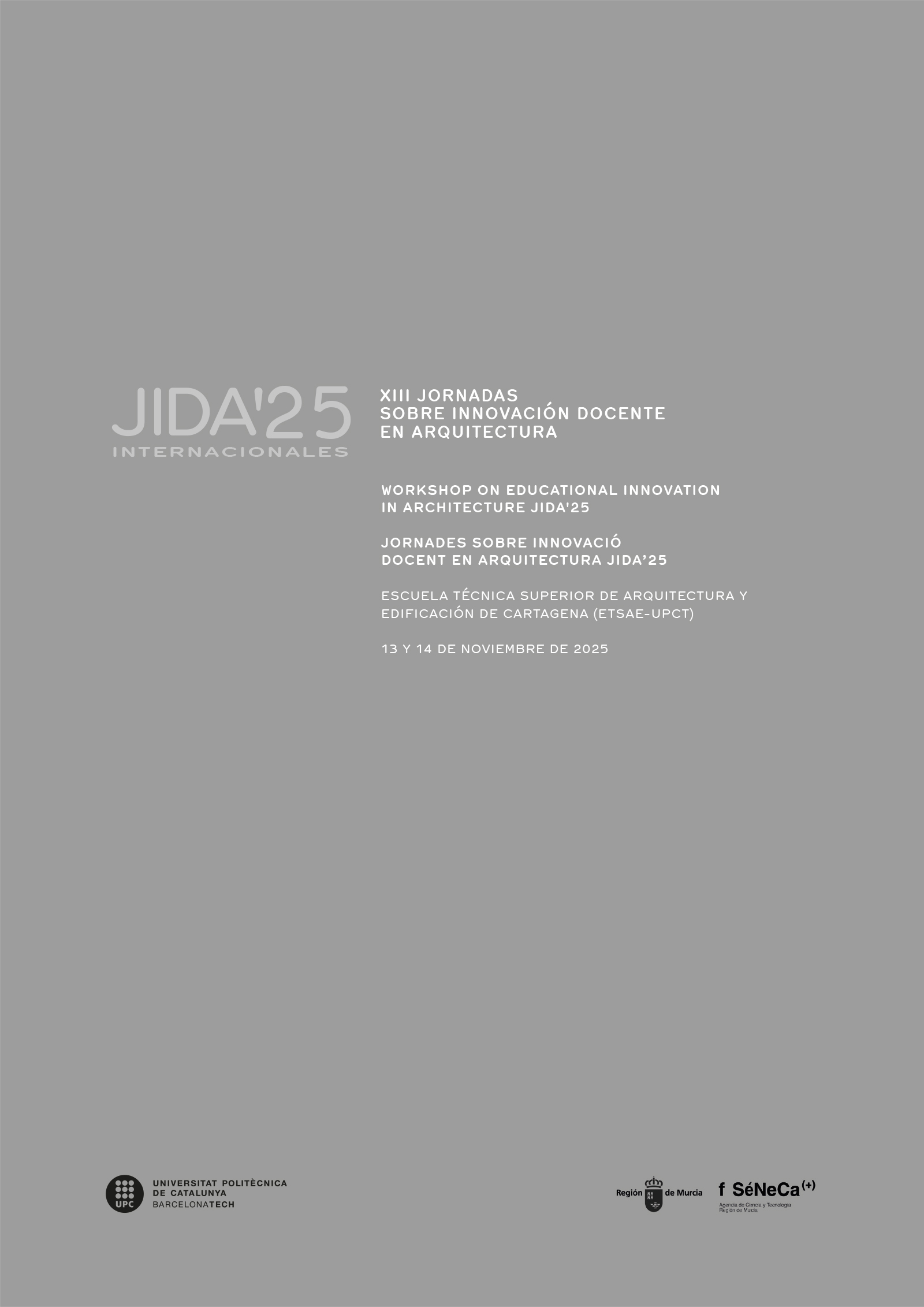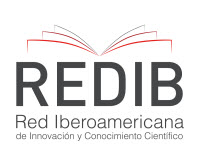Architecture in ecosystemic co-production: disciplinary challenge and design didactics
DOI:
https://doi.org/10.5821/jida.2025.13616Keywords:
ecosystem services, vertical design studio, biophilia, green infrastructure, ecoarchitectureAbstract
In a territory where over 40% is protected natural areas and much of the urban fabric consists of fragile ecosystems, architectural education faces the urgency of the global crisis and the regional climate change agenda, which demands concrete responses. In this context, the School of Architecture created a design research space through the Vertical Studio, integrating design studios and theory courses within an ethical framework that conceives architecture as technical mediation for ecosystemic co-production. The analysis examined programs, agendas, and projects under three criteria: disciplinary complexity, territorial situation, and sustainability. Results compared experiences with and without the vertical studio, highlighting the effectiveness of Research by Design, vertical integration, and micro-curricular management in aligning education with sustainability challenges.
References
Asian Development Bank. 2024, October. How cities can combat extreme heat using nature-based solutions. Development Asia. https://development.asia/explainer/how-cities-can-combat-extreme-heat-using-nature-based-solutions
Bowen, G. A. 2009. Document analysis as a qualitative research method. Qualitative Research Journal, 9(2), 27–40. https://doi.org/10.3316/QRJ0902027
Castellano-Pulido, F., Serrano-Lanzarote, B., & Serrano-Lanzarote, M. 2020. Taller vertical y juego de roles en el aprendizaje de programas arquitectónicos emergentes. Jornadas sobre Innovación Docente en Arquitectura (JIDA’20), 667–679. Universitat Politècnica de Catalunya. https://doi.org/10.5821/jida.2020.9463
Díaz, S. et al. 2018. Assessing nature’s contributions to people. Science, 359(6373), 270–272. https://doi.org/10.1126/science.aap8826
Fischer, A., & Eastwood, A. 2016. Coproduction of ecosystem services as human–nature interactions—An analytical framework. Land Use Policy, 52, 41–50. https://doi.org/10.1016/j.landusepol.2015.12.004
Groat, L., & Wang, D. 2013. Architectural research methods (2nd ed.). Hoboken, NJ: Wiley. wiley.com
Grossmann, K., Connolly, J. J. T., Dereniowska, M., Mattioli, G., Nitschke, L., Thomas, N., & Varo, A. 2021. From sustainable development to social-ecological justice: Addressing taboos and naturalizations in order to shift perspective. Environment and Planning E: Nature and Space, 5(2). https://doi.org/10.1177/25148486211029427
Guy, S., & Farmer, G. 2001. Reinterpreting sustainable architecture: The place of technology. Journal of Architectural Education, 54(3), 140–148. https://doi.org/10.1162/10464880152632451 tandfonline.com
Haines-Young, R., & Potschin, M. B. 2018. Common International Classification of Ecosystem Services (CICES) V5.1 and Guidance on the Application of the Revised Structure. Nottingham: Fabis Consulting. (PDF oficial). cices.eu
Hosey, L. 2012. The shape of green: Aesthetics, ecology, and design. Washington, DC: Island Press. Island Press
Järekari, J., Fagerholm, N., Eilola, S., & Arki, V. 2025. Nature facilitates eudaimonic well-being through promoting connection with self and others. People and Nature. Advance online publication. https://doi.org/10.1002/pan3.70104
Jonas, W. 2007. Design research and its meaning to the methodological development of the discipline. En R. Michel (Ed.), Design Research Now: Essays and Selected Projects (pp. 187-206). Birkhäuser Basel. https://doi.org/10.1007/978-3-7643-8472-2_11
Kumar, P. et al. 2024. Urban heat mitigation by green, blue, and grey infrastructure: Drivers, effectiveness, and future needs. The Innovation, Volume 5, Issue 2, 100588. https://doi.org/10.1016/j.xinn.2024.100588
Millennium Ecosystem Assessment 2005. Ecosystems and human well-being: Synthesis. Washington, DC: Island Press. (Informe oficial MA). millenniumassessment.org+1
Ministerio del Medio Ambiente. 2023. Plan de Acción Regional de Cambio Climático: Región de Los Lagos. Santiago, Chile: Gobierno de Chile. Recuperado de https://cambioclimatico.mma.gob.cl/wp-content/uploads/2025/07/Resumen-ejecutivo-PARCC-Los-Lagos.pdf
Mohammed, G., & Mohmoud, N. 2024. The role of vertical design studio as a hidden curriculum in design education: Moving from an extra-curricular activity to an institutionalized practice. SSRN. https://doi.org/10.2139/ssrn.5387133
Pineda-Pinto, M., Frantzeskaki, N., & Nygaard, C. A. 2021. The potential of nature-based solutions to deliver ecological justice: A systematic literature review. Environmental Science & Policy, 121, 1–13. https://doi.org/10.1016/j.envsci.2021.02.008Schön, D. A. (1992). The reflective practitioner: How professionals think in action. Routledge. https://doi.org/10.4324/9781315237473
Sommese, F. 2024. Nature-Based Solutions to Enhance Urban Resilience in the Climate Change and Post-Pandemic Era: A Taxonomy for the Built Environment. Buildings, 14(7), 2190. https://doi.org/10.3390/buildings14072190
Valdespino, M. F., & Flores, E. 2021. Taller vertical, diseño de hábitat resiliente indígena: Experiencia docente conectada. Jornadas sobre Innovación Docente en Arquitectura (JIDA’21), 367–377. Universitat Politècnica de Catalunya.https://doi.org/10.5821/jida.2021.10516
Zhong, W., Schröder, T. W. A., & Bekkering, J. D. 2022. Biophilic design in architecture and its contributions to health, well-being, and sustainability: A critical review. Frontiers of Architectural Research, 11(1), 114-141. https://doi.org/10.1016/j.foar.2021.07.006






















